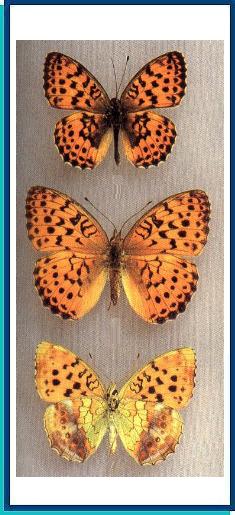LEPIDOPTERA
N Y M P H A L I D A E Swainson, 1827
BRENTHIS Hiibner, [1819]
Brenthis daphne (Bergstrasser, 1780)
Brenthis daphne (Bergstrasser, 1780)

• TYPE LOCALITY. [Hanau-Munzenberg, Germany].
• SYNONYMS. daphne ([Denis et Schiffermuller], 1775), nom. nudum; chloris (Esper, [1778]), nom. praeoccup.
• RANGE. From Middle Europe across Asia Minor to Central Asia and along S. Siberia to central China, Korea and Japan.
• DISTRIBUTION AND VARIATION. Both individual and geographical variability not so great. The nominotypical subspecies (= epidaphne Fruhstorfer, 1907; = anatolica Belter. 1935; = syriaca Belter, 1935) occurs in the central and S. European parts, the Caucasus and Transcaucasia, W. Siberia, the Altais, the Kopet-Dagh, the Tian-Shan, the Tarbagatai and Saur mts., and the Ghissar-Darvaz. Transbaikalia as well as the Amur and Ussuri regions are populated by the ssp. ochroleuca (Fruhstorfer, 1906). In the Sakhalin and Kurile islands, the ssp. iwatensis Okano, 1951 is known to occur. From Korea, the taxonjumidia (Butler, 1882) (= mediofusca Matsumura, 1929) has been described, while the ssp. rabdia Butler, 1877 is Japanese.
• HABITATS AND BIOLOGY. Preferring humid meadows, forest edges up to 1,500 m a.s.l. Flight period: June to July. Host plants (Dantchenko & Nikolaevsky, in press), in the lower flow of Volga River: Rubus caesius; in the Ussuri region: R. sachalinen-sis.
• SIMILAR SPECIES. Brenthis hecate, B. ino: smaller; UNH without intensive violet dust; black submarginal spots on UNH well-developed.
Photo and text: Guide to the BUTTERFLIES OF RUSSIA and adjacent territories Volume 2. PENSOFT, Sofia - Moscow. 2000